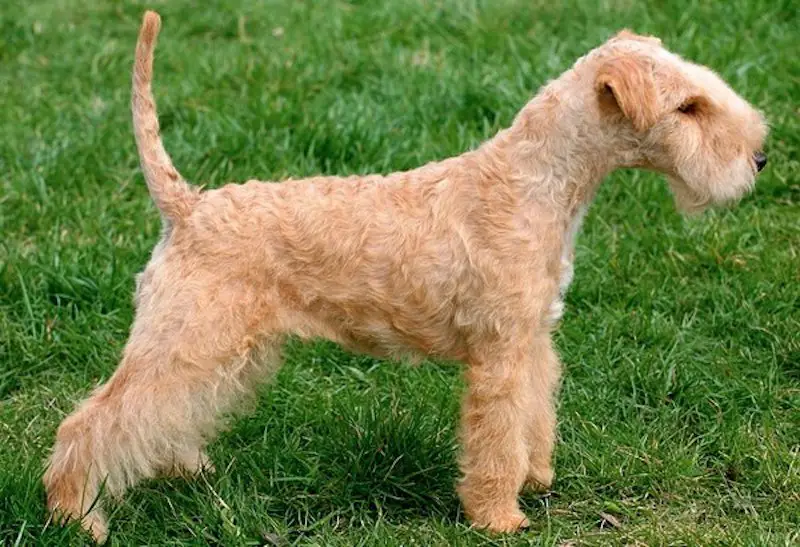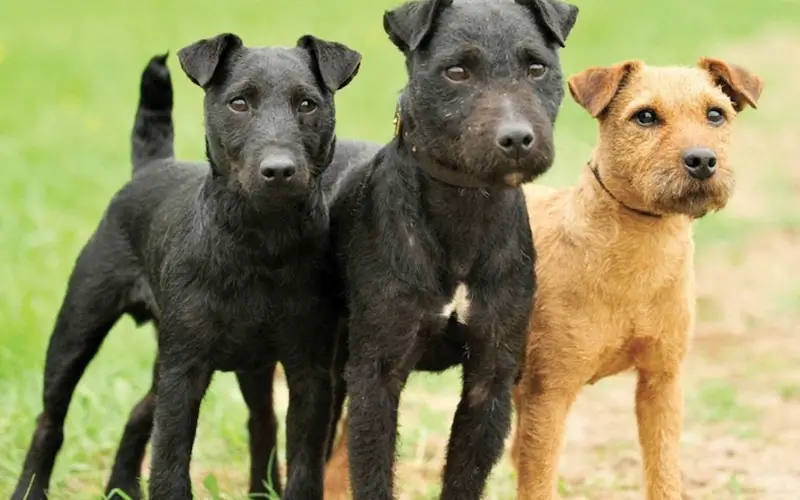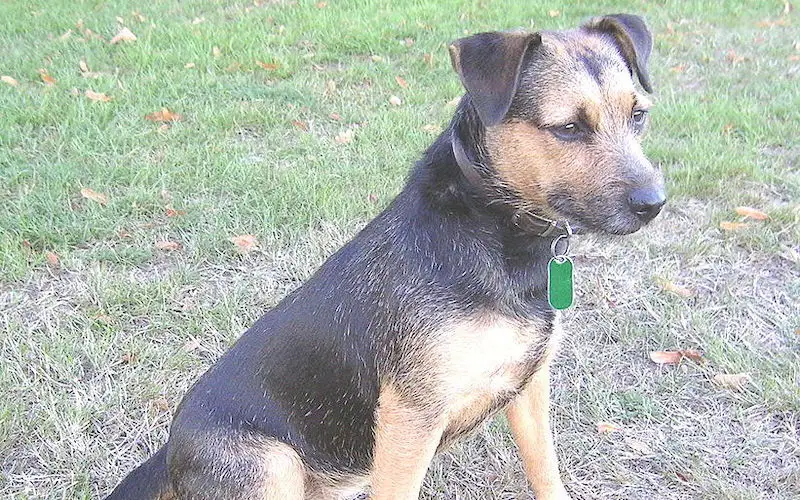patterdaleterriers.co.uk is a participant in the Amazon Services LLC Associates Program and other affiliate advertising programs designed to provide a means for us to earn fees by linking to Amazon.co.uk and affiliated sites. Affiliate links may be used on this page and in patterdaleterriers.co.uk articles, but they do not impact on the price that you pay and they do help me to get this information to you for free. Read my privacy policy for more information regarding affiliates.
The Patterland Terrier is a cross breed dog with one parent a Lakeland Terrier and the other a Patterdale Terrier. A Patterdale Lakeland Cross (AKA Patterland) is a small, sturdy dog with a feisty, but affectionate personality. They love to chase and are fast, agile dogs. Given the chance, they can get up to all sorts of mischief, so they need a firm hand and lots of training.
Lakeland Terrier
Lakeland Terriers were bred in the Lake District to be farm dogs. Their jobs are to protect livestock from foxes and to hunt rabbit, rats and mice. Due to their breeding, they have a high prey drive, which makes recall training essential.

They are a small dog, reaching 13-14 inches and weighing 15-17 pounds. Their coat is thick and coarse, usually straight or slightly wavy and is longer around the muzzle and over the eyes. They typically have fawn coats with grey or black saddle markings, but they can also be blue, black or liver and show no markings at all or very faint markings. They are prone to separation anxiety, but do not have any known hereditary disorders.
Patterdale Terrier
Another hunting breed, the Patterdale Terrier is also a Lake District dog, common as farm dogs. They are short and stocky, with either a smooth or rough coat short coat. The most common coat colour is black, however, grey, liver and fawn are also possible. Some puppies also have white markings on their chest and muzzle. Less common are black and tan or liver and tan.

The Patterdale is an affectionate dog who loves attention. If socialised early, they are great with children and can also live peacefully with other dogs. They need an active household and walks of at least an hour per day. They also need a lot of training. The training should be consistent and challenging to prevent boredom. You may find this article on Patterdale temperament and interesting and helpful guide.
Patterdale Lakeland Cross Appearance
Thanks to the variations in colour and marking from their parents, this cross breed can show a wide range of coat colours. Solid black or black with white chest markings is the most common, but they can also be chocolate, liver, grey, blue and fawn. Black and tan is also possible. Saddle markings are less common but do occasionally show.
They tend to have short and straight coats, but they can have slightly wavy coats. The hair is always dense and coarse but can be longer around the muzzle and eyebrows. They require weekly brushing to prevent matting but are a low shedding breed.
Possible eye colours are hazel, brown or amber. The most dominant nose colour is black; however, chocolate is also common and very occasionally puppies can be born with a pale pinkish-brown nose colour called ‘isabella’.

Patterland Temperament
Patterland Terriers are a very confident and feisty breed. They are not known to be confrontational but if tested by another dog they do not back down. If socialised from an early age they will be friendly with other dogs, but a lack of socialisation can lead to aggression.
Due to their high prey drive, they are not suitable to live with cats or prey pets. This includes rabbits, guinea pigs, rats and mice. They may tolerate cats if they are introduced as a puppy, but an adult dog not familiar with cats will chase them.
They are bred from working breeds, so they have a strong, muscular body and are very energetic. Patterlands need an active household where daily walks are provided. They also need a confident and firm owner who will maintain training, particularly recall. Training needs to be challenging as they are a very intelligent dog, but easily distracted.
Their agility and speed makes them great sporting dogs. They do particularly well in agility classes and flyball competitions. This should be incorporated into their training, even if just at home. These sports are both physically and mentally stimulating.
The Patterland is an affectionate and loyal breed, but prone to separation anxiety. Most likely your Patterland will become your shadow around the house. They are not suited to flats or homes without gardens as they need the space to run and play. They can also be quite vocal, so this should be addressed during puppyhood if possible.
Tips For New Owners of the Patterdale Lakeland Cross
Patterlands can be quite stubborn and are easily distracted, so your training needs to be firm and consistent, but make it fun to keep them engaged. Clicker training is a great way to teach your Patterland. This clicker training article is a great resource.
Terrier breeds are prone to weight gain so during training use treats that are low in calories and do not contain added sugars. Boiled chicken is a great option or high-quality small treats that are easy to chew.
Be adventurous with your walks. Terriers thrive on new experiences and taking them hiking or woodland walking will be fun and mentally stimulating.
You don’t need to spend a fortune on trips to the groomers, but your Patterland will need brushing weekly to keep his coat in good condition. This slicker brush by KW Smart is perfect for getting though to the undercoat and removing any loose hairs.
- Slicker brushes
- Soft
- Medium. 8 x 14 cm
Puppy classes will be really beneficial, not just for socialisation, but also for distraction training. Patterlands have a tendency to lose focus when they are bored, so a busy puppy class will teach them to ignore distractions.
For older Patterlands, it is a good idea to get some advice from a dog behaviourist. A lack of socialisation can lead to dog aggression, but you can teach old dogs new tricks! They just need to associate other dogs with pleasant experiences. Your Patterland is also prone to separation anxiety. A trainer will be able to give you tips to combat this and help your dog feel calm when home alone.
If you’re interested, you can read about more



My pattterdale hates arguments and shouting he goes for the person who is shouting and bites is this normal
If they are scared then they have more of a tendency to bite. There are ways you can do positive reinforcement so that shouting is not so scary for him such as clicker training with his favourite treat. You might also find this article helpful Peter:
https://patterdaleterriers.co.uk/patterdale-terrier-aggression/
Hi, my patterland has recently turned one. She likes to climb trees so she can now get out of the garden. Is this normal? I didn’t know dogs could climb trees.
Some of them can climb! If a patt wants something he will get it!